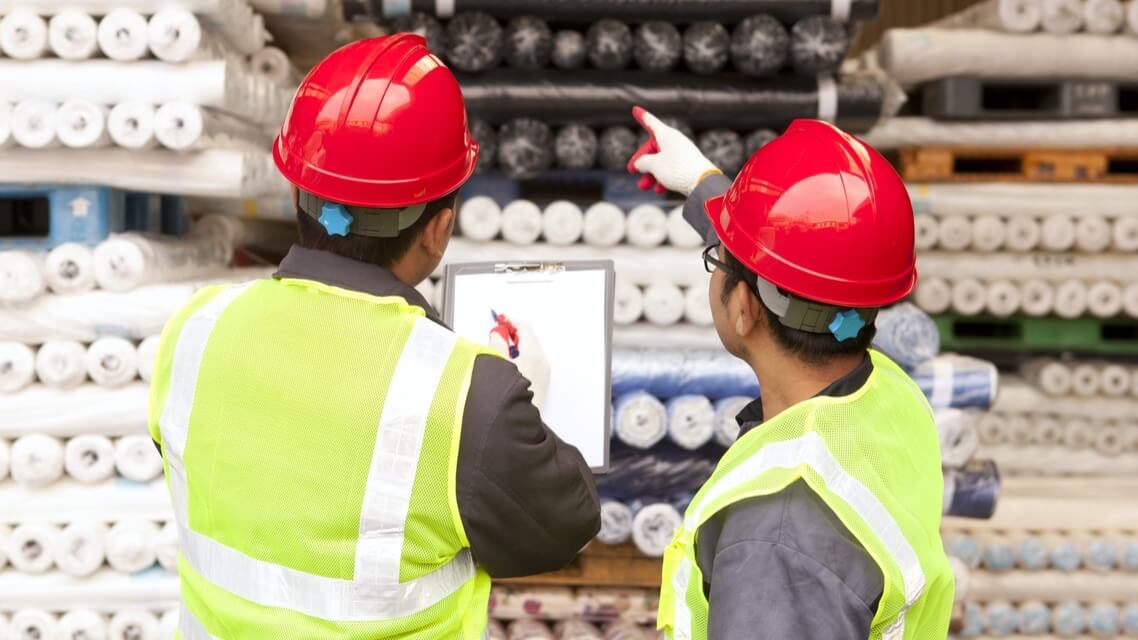Apparel quality is paramount for brands. It only takes one ‘bad batch’ to cause irreversible damage to your reputation.
If this is the kind of scenario which keeps you up at night, explore these four potential causes of poor quality and our suggestions as to how you can mitigate or avoid them altogether.
The Fashion Industry Throws Up Many Challenges
According to The State of the Fashion Report 2017, the most pressing challenges that fashion executives face are:
- Dealing with market volatility, uncertainty and the shifts in the global economy
- Growth in sales and profitability
- Increased competition from online players
- Supply chain improvements
- Decreasing foot traffic
- The rapidity of the global fashion cycle
Brand owners are also placed under immense pressure to keep up with the latest industry trends and comply with requirements from international regulators while also trying to meet production quality standards.
It’s understandable that sometimes apparel quality issues can occur when there are so many other challenges to deal with, so this article will shed some light on why this may be happening and provide you with a few actionable solutions.
Here are 4 reasons why you might not be achieving your apparel and softlines quality goals:
1. Ineffective Raw Materials Inspection & Analysis
Ensuring the quality of incoming raw materials is a critical first step for producing high-quality goods. The concept ‘garbage in, garbage out’ is applicable here.
It’s important to identify any non-conforming materials before the start of production which will lead to improved operational performance, a increased level of quality and saved time and money.
This is especially relevant to brands whose supply chains can be found in developing countries, as raw material issues can occur here. Perhaps it’s cultural, or perhaps it’s due to a lack of organisation, but it’s not always possible to trust the quality that suppliers give you unless you’ve got a long-term relationship with them which is working. You’ll also preferably have a hand in auditing them and checking the quality of raw materials coming from them.
When the raw materials are coming in from suppliers, or even still at the supplier’s premises, you should be inspecting:
- That you’re being given the right materials
- Quality of material
- Faults in material
- Size of the pieces
- That colour is consistent
This will reduce the risk of experiencing quality problems later on during your production process because you know that the raw material is sound to begin with.
It is probably worth investing into your wider supply chain, in order to help guide your suppliers to be sourcing the best materials local that meet your expectations in terms of quality and consistency, but of course this is only going to offer a positive ROI if the suppliers in question adhere to your requests and continue to strive to maintain that quality.
2. Insufficient Information and Ineffective Communication
Effective communication with suppliers is vital for ensuring that all your quality standards and expectations are met. Problems can often occur when the factory is located abroad because the language barrier, as well as time difference, can cause delays and insufficient information. Moreover, problems with insufficient information arise after factories conduct weekly production meetings and the complete, correct information isn’t passed onto the production team. The production team continues with bulk production without approval due to delivery schedule pressure, which results in defects and other quality issues.
To solve this problem, ensure that an open line of communication and transparency occurs between you, your suppliers, manufacturers, and workers at all times. With the help of telecommunications, ensure that your suppliers and manufacturers have all the necessary documents regarding your product specifications, PPS, delivery dates, etc. at their disposal and be sure to visit the factory regularly.
If you can’t visit suppliers’ facilities regularly, consider enlisting the help of a QA provider, like SgT, who have quality specialists on the ground in your supplier’s country who can assess, communicate with, and inspect suppliers for you.
{{cta(‘3e290539-06e3-499a-8278-b4b449b8da41′,’justifycenter’)}}
3. Unexpected Expenses due to Internal Quality Management
Many brand owners don’t realize that there are many hidden costs involved with managing your quality systems internally as opposed to opting for outsourced quality solutions.
These unexpected expenses can be referred to as the ‘cost of quality’ and can have adverse effects on your brand goals, as well as resulting in decreased ROI.
COQ is made up of the following costs:
- Money a factory needs to spend on garment and material inspections
- Quality personnel training and salaries
- Labour for repair work to ensure the products meet quality standards
- Rectifying and reworking faulty garments
Fortunately, textile quality control doesn’t need to be expensive. The simple solution to this problem would be to look into outsourced textile quality management solutions, which have many benefits for your brand, one of the main advantages being cost effectiveness.
To read more on the benefits of Outsourced Textile Quality Management, click here.
4. Undefined and unclear brand purpose and goals
Having a clearly defined brand purpose is crucial for connecting with your target market as well as driving brand goals which help managers, suppliers, inspectors and factory workers establish clear job objectives. Having a defined brand purpose also outlines what your brand stands for, making it easier for manufacturers to stay motivated while working towards common goals and long-term vision.
Why does your brand exist, other than to just make a profit?
You know that you offer apparel, but can you define your brand as succinctly as these famous brands do?
Chanel: “To be the Ultimate House of Luxury, defining style and creating desire, now and forever.”
Patagonia: “Build the best product, cause no unnecessary harm, use business to inspire and implement solutions to the environmental crisis.”
Warby Parker: “To offer designer eyewear at a revolutionary price, while leading the way for socially-conscious businesses.”
If your team, and indeed your suppliers, do not understand the values of the products that they’re responsible for making, how can they subsequently live up to consumer expectations? This is especially true with apparel, where the ‘ethos’ of a brand is actually one of the major USPs for consumers.
Defined brand purpose and goals will ensure consistency within the organization, including on the factory where garments are made.
It provides guidance and direction, facilitates planning, motivates and inspires employees, and helps you to control and evaluate brand performance.
When determining your brand purpose and targets, it’s important to ensure that they are specific, measurable, achievable, realistic and time-specific. Ensure that your goals are reviewed regularly and that they are known and readily available to your organization’s supply chain. Having clear brand goals will make sure that you meet your brand’s quality standards consistently and efficiently help to grow your apparel brand.
Have you experienced any issues with meeting your brand’s goals in the past? Why is this and what remedies did you take? Do you have any questions regarding how to meet your brand’s apparel quality goals? Please feel free to leave a comment below. We’d love to get in touch!
{{cta(‘1f70199b-91b8-4886-92dd-fafc5f3c3b19′,’justifycenter’)}}





